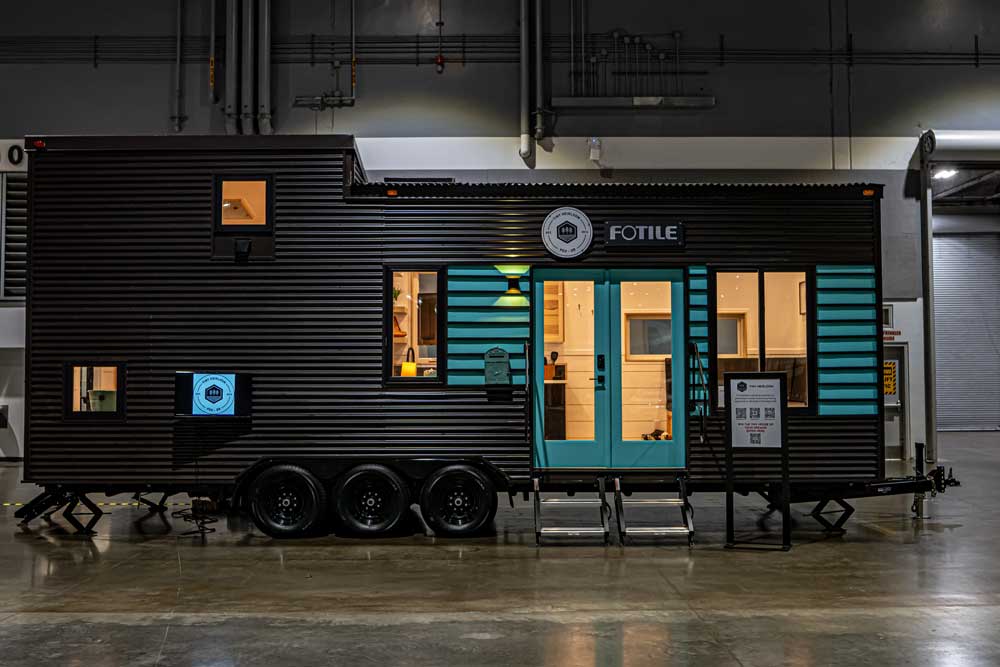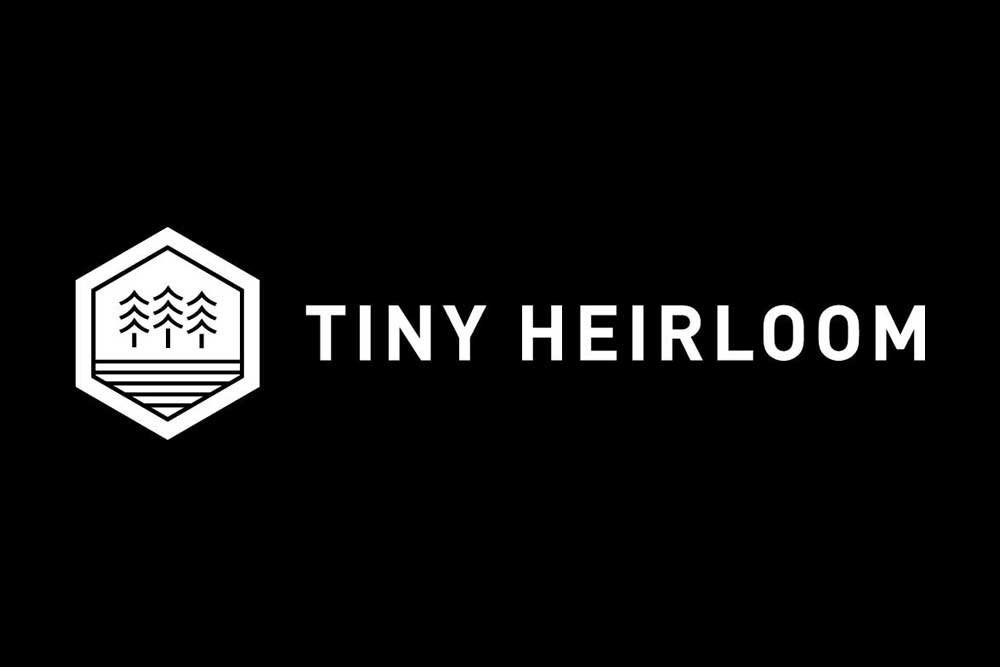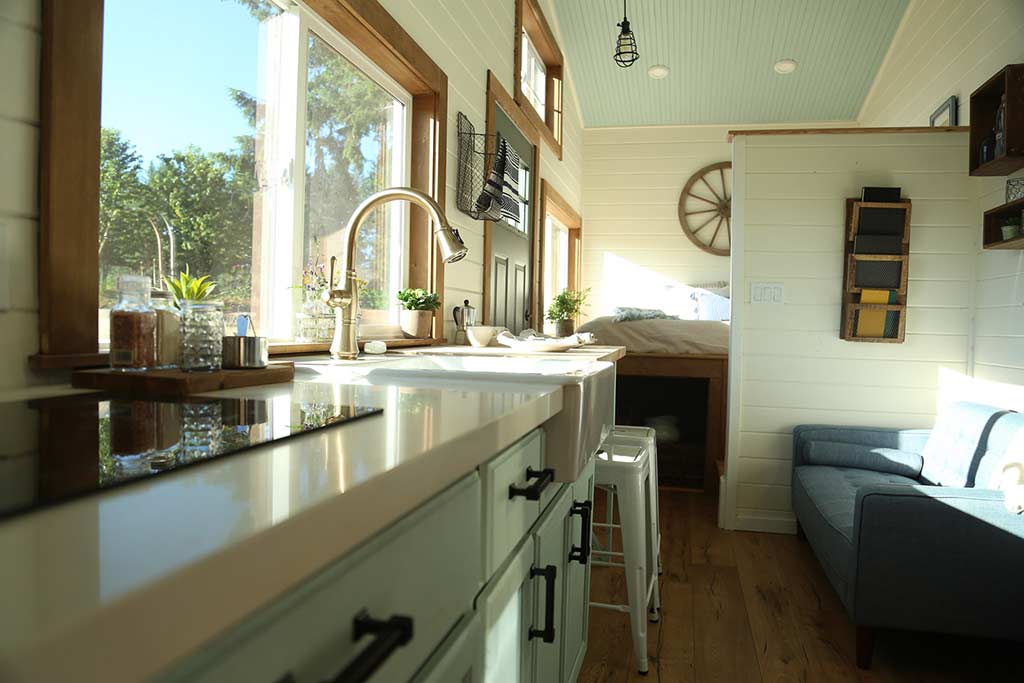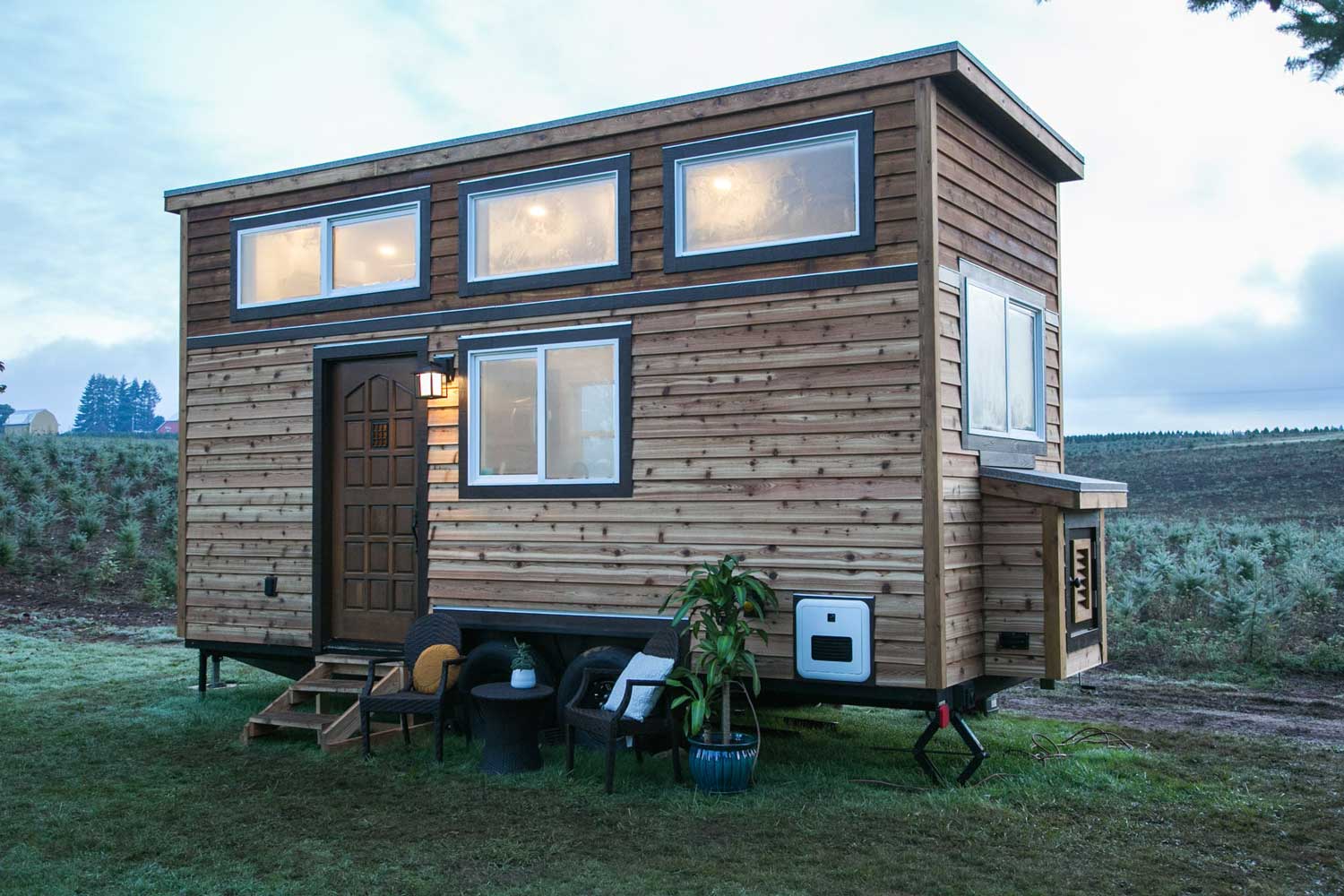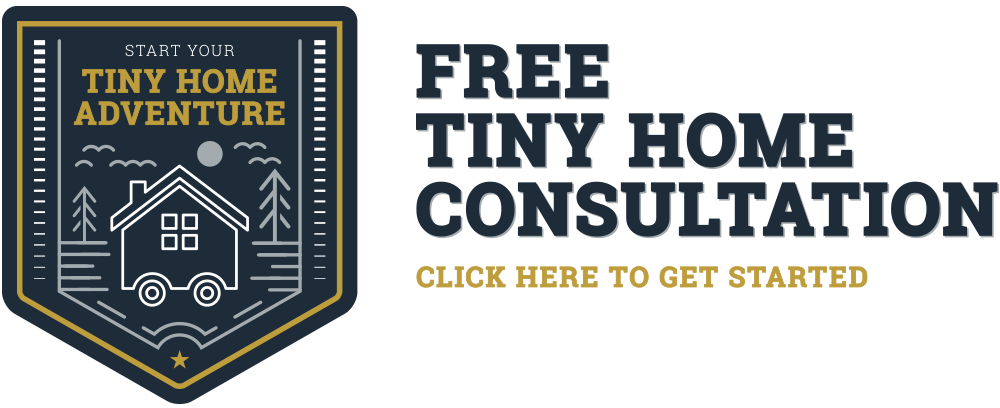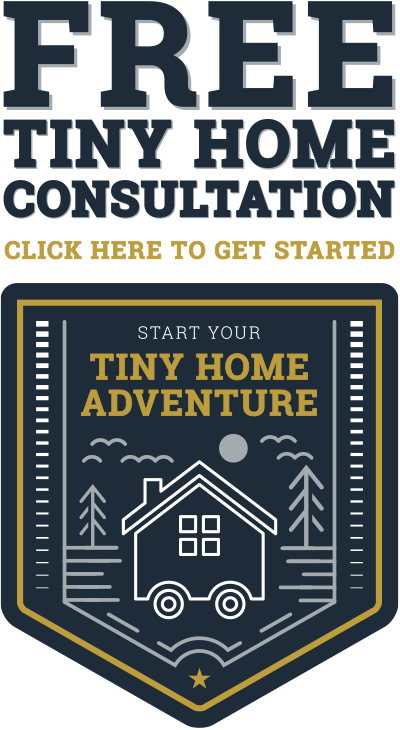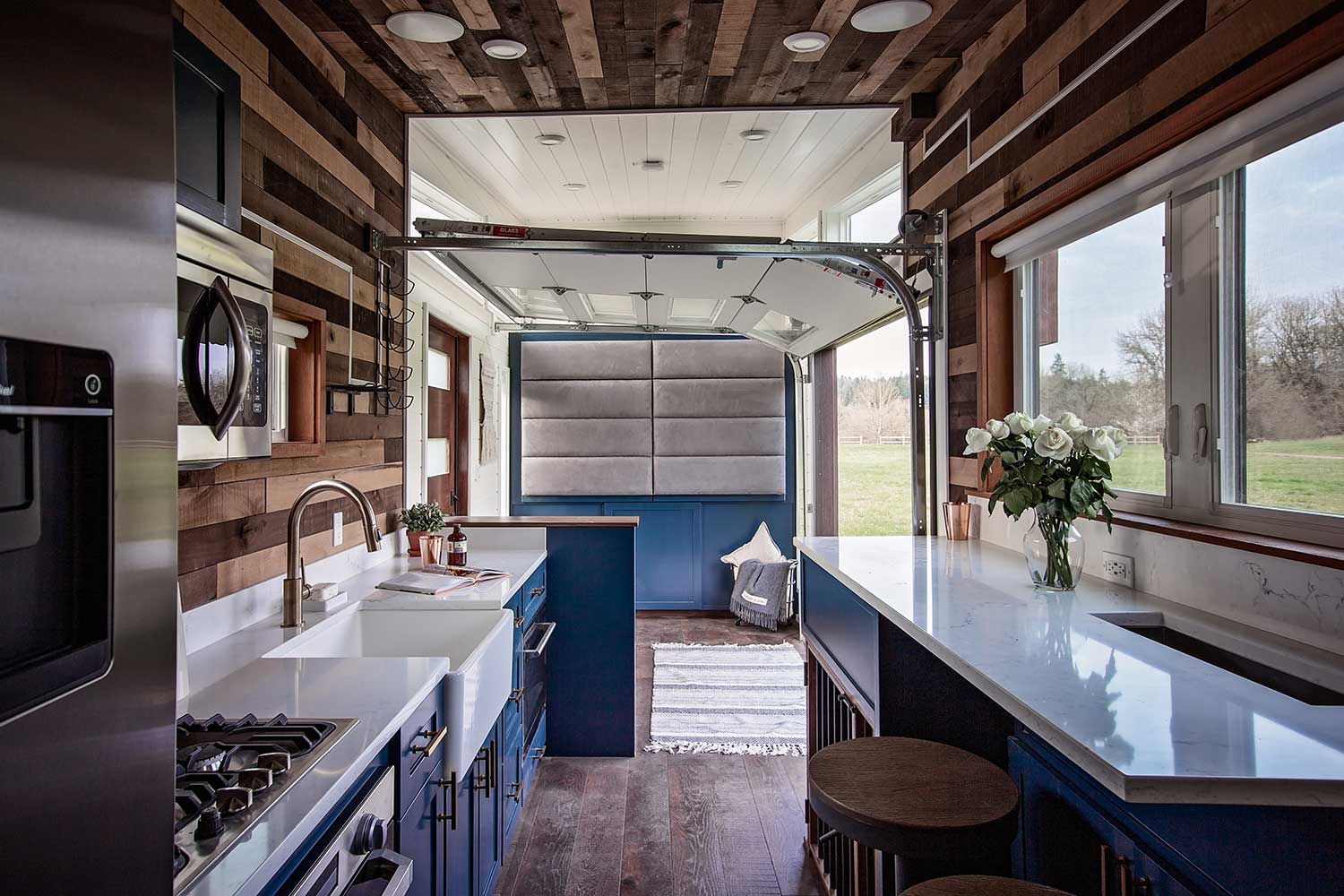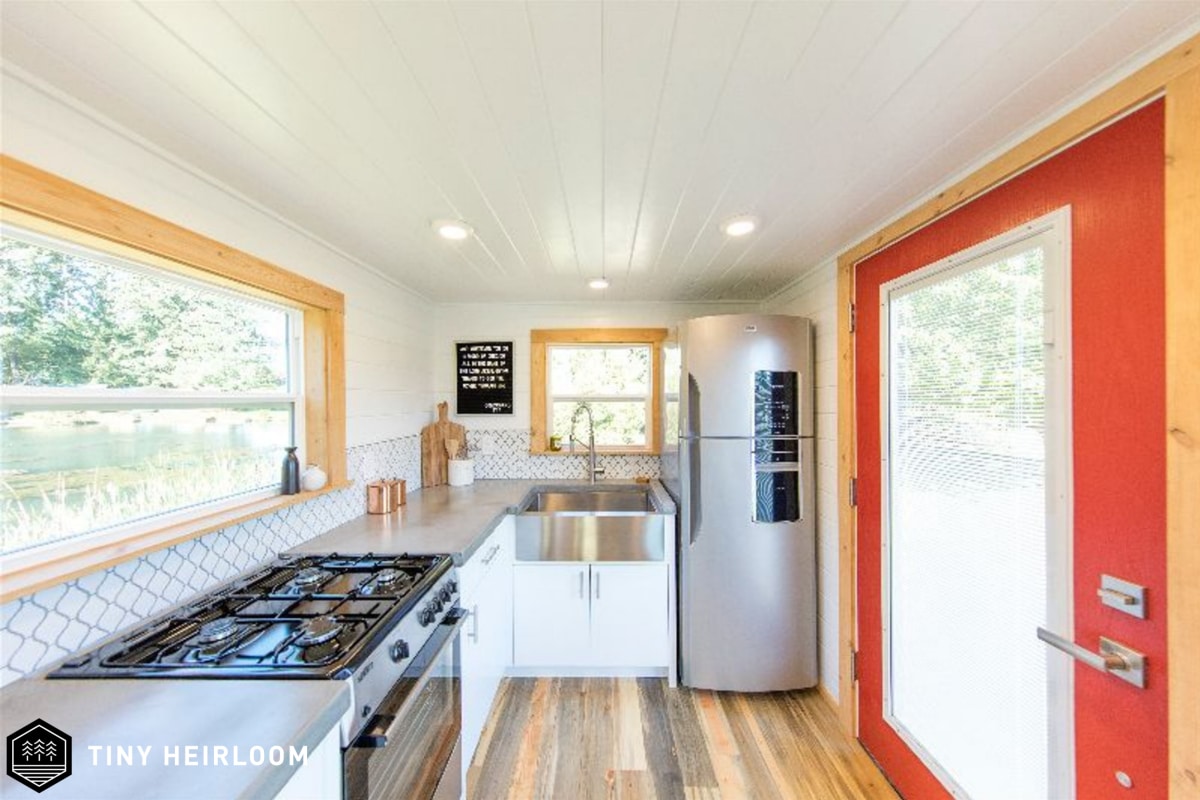
How Much Does a Tiny House Cost?
You’ve seen them: the tiny, cozy homes that cost a fraction of a larger house and have increased freedom and mobility.
With housing affordability at “crisis levels” across the United States, financial incentives — including cheaper upfront costs, the opportunity for mortgage-free living, lower monthly costs, to name a few — are luring more and more people to transition to tiny home living.
But how much does a tiny house cost? Before you take the plunge into building or buying a tiny home, it’s important to understand the financial considerations in detail. While some costs are more obvious, such as the price of the actual home and materials, others are more complex or hidden, such as the cost of fuel to transport your tiny home from place to place.
Below is an outline of the key tiny home costs to help get you started.
Your Tiny Home Cost Factors
Does a tiny home really equal tiny bills? Be sure to take all the factors below into account before making any decisions.
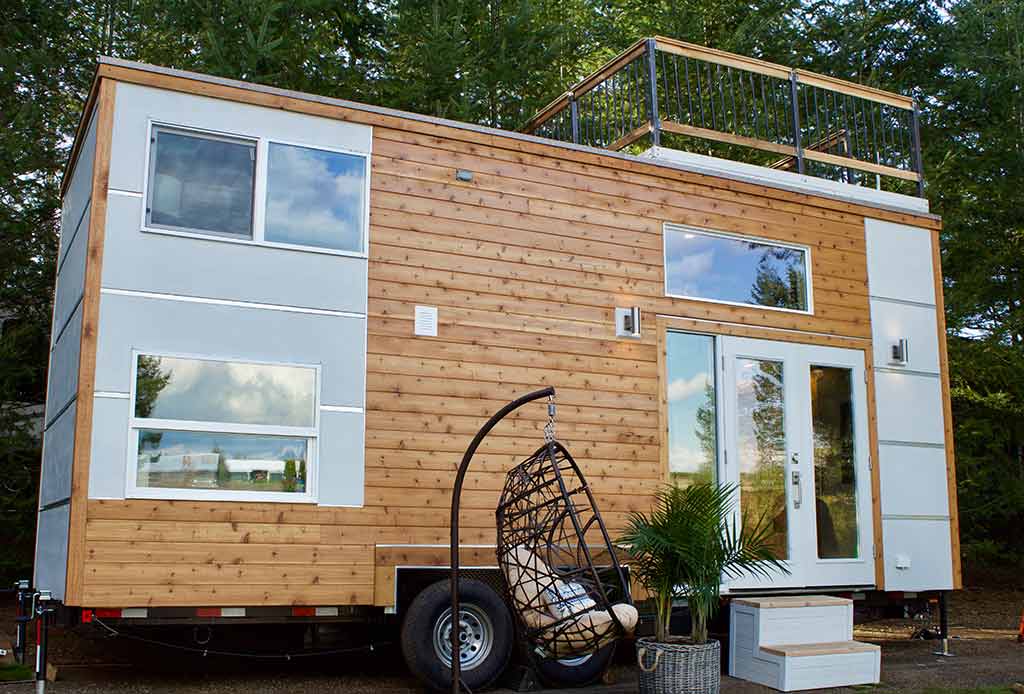
The Tiny Home Itself & Mortgage Payments
Prices for tiny homes depend on the size, quality and the details of the house, but they are almost always much less expensive than even a modest traditional home. You can find tiny homes built for as little as $10,000 or luxury, custom tiny homes for as much as $150,000. More specifically, the median cost of a professionally-built tiny house on wheels in the U.S. in 2017 was just $59,884. For comparison purposes, the average sale price of a home in the U.S. in 2017 was nearly $385,000.
Depending on your situation, you may be able to pay cash for your tiny home after saving up, and live a mortgage-free life. For many tiny homeowners that have previously owned a home, the equity that they’ve accumulated over the years can cover the majority, if not all, of the cost of their new tiny home. In fact, 68% of tiny home owners do not have a mortgage at all!
If you’re a first-time homeowner, you may end up with a mortgage, at least initially. Fortunately though, many tiny home builders offer in-house tiny home financing options to help make your dream a reality. And if you do end up with a monthly tiny house payment, chances are, it will be nothing compared to the average mortgage payment in the United States. Since most tiny homes cost under $150,000, the mortgage is usually no more than $600 a month!
The actual cost of your tiny home will depend on whether you purchase a prefabricated/premade home (which tend to start around $45,000), partner with a tiny home builder to design a custom tiny home from the ground up (which is typically more expensive), or build the tiny home yourself. Although going the DIY-route might seem cheaper, for an inexperienced tiny home builder it can eat up a lot of time and resources, and result in a less efficient and unprofessional outcome. Another option is to purchase a pre-owned tiny home, which offers the chance to live in a one-of-a-kind, quality-built home at a fraction of the full price. Take your time and think carefully about which of these options is right for you!
Building Permits & Taxes
If you partner with a professional tiny home building company, you will typically not have to worry about building permits. They usually take care of all licenses and other legalities that come with manufacturing for you, so that you can sit back and enjoy; stress-free.
However, if you build the tiny home on your own, you may need to pay for a local building permit, which can cost as little as a few hundred dollars or as much as a few thousand. So keep this in mind when drawing up your budget.
Also, depending on where you live, you typically do not have to pay any taxes to park your tiny home.
Location: Land or Parking?
Another cost factor to think about is where you’re going to place, build or park your new tiny home.
Some tiny homeowners choose to put their tiny houses on land that they own or purchase, with the intent of having their home be stationary. Others rent land or a parking spot and pay a monthly payment. The price of purchasing or renting land will of course vary depending on location, acreage, and other factors. For example, buying an acre of land in the “least valuable” state in the United States can cost less than $2,000, but more than 100 times that in the “most valuable” state.
On the other hand, part of the appeal of tiny homes is that many are mobile and offer the opportunity to travel from place to place. If you don’t own land, another option is to park your tiny home in a tiny house community or RV park. At an RV park, all utilities (water, electricity, garbage, wifi, etc.) will be conveniently set up and ready to use. Also, many RV parks offer unique amenities such as pools, gyms or common areas that you can take advantage of during your stay. With these more temporary options, you can travel around the country and have endless unique sights and activities just outside your door.
If you plan to travel with your tiny home, be sure to budget for the price of fuel as well, which will vary depending on how frequently and how far you travel. One more important thing to note: If you purchase your tiny home from a building company that is a Travel Trailer Manufacturer, and RVIA certified, you can drive your tiny home down the road anytime you want. If not, you may have to pay for an escort service or arrange and pay for a permit in advance.
For more information and ideas, check out our thorough guide to where to park a tiny home (legally).
Utilities
In addition to the short term financial incentives of living in a tiny home trailer, the resource-minimal lifestyle can save you heaps of money in the long run. According to the Alliance to Save Energy, tiny homes are not only sustainable but more efficient to run, considering they comprise only 100-400 square feet (on average) to heat, cool, and run, compared to the average American home’s 2,600 square feet. This fact means you can reduce your ecological footprint while also saving money on the price of your monthly utility bills.
Your potential cost of utilities will depend on whether or not you park your tiny home in a community or place it on your own land.
If you live on your own land, you’ll be responsible for the full cost of utilities, which include:
- Water
- Sewage/Septic
- Gas
- Electricity
- Garbage
- Internet
Some tiny house communities or RV parks include the cost of some of these utilities in their parking fee (like garbage, electricity, water).
Some tiny homes are designed for “off-the-grid” or self-sufficient living, which can help reduce your cost of utilities in the long run. For example, although solar panels may be expensive to install upfront, in time they can save you lots of money on electricity and help the environment at the same time. Win-win!
Overall, depending on where you live, and what utilities you need to pay for, the average cost of utilities can range from $50-$300 each month.
Tiny House Insurance
Most home insurance is based on risk factors and the total cost of a home. Each situation is different, but you can anticipate insurance costs using an online calculator. On average, most tiny homeowners will pay $100 a month give or take for homeowners insurance that covers their tiny houses.
General home insurance companies sometimes won’t insure a tiny house, or it will be a hassle to get them to – they don’t know how to classify it, what it’s value is, and so on. That’s not the case with tiny home insurance specialists, such as this Tiny Home Insurance from Strategic Insurance Agency. Working with a company that specializes in tiny home insurance will help ensure you’re being charged fairly and accurately.
Furnishings & Decorations
Having less room to decorate and furnish will be a welcome break on your budget. Fewer furniture and decorative pieces will be needed to fill your tiny home space, which also means, if you’d eventually like to give your tiny home a new look, you can easily refurbish and decorate the whole place in a couple hours flat.
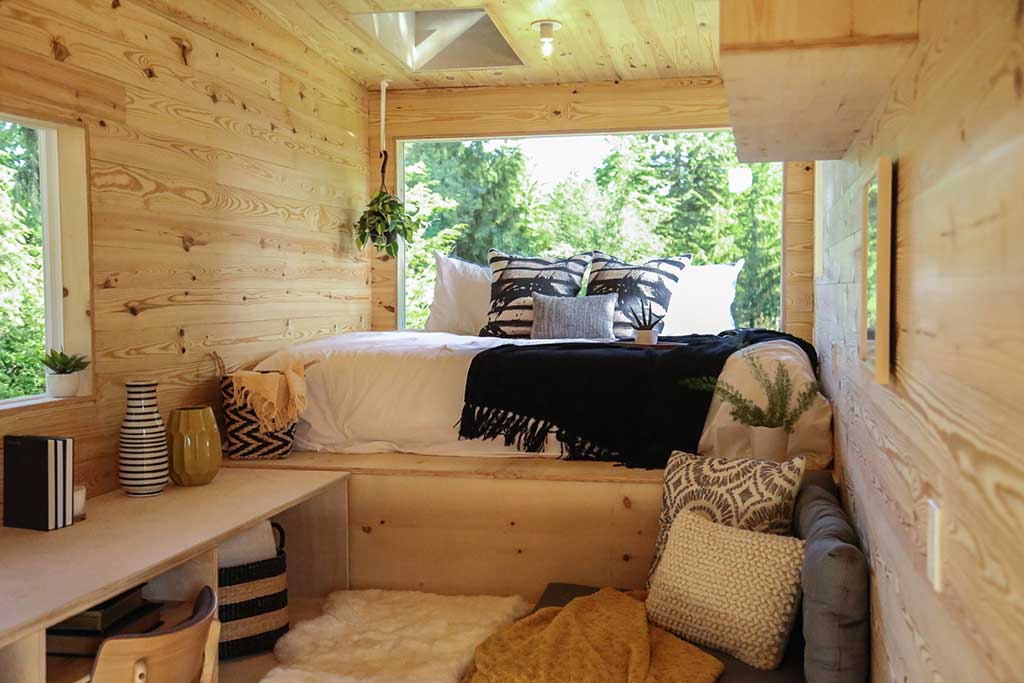
Maintenance & Repairs
Maintenance and repairs aren’t fixed or anticipated costs. Every homeowner should have some savings that they can use for anticipated repairs or costs each month, and this applies to tiny homeowners too. Tiny homes have lots of moving parts and important equipment. Like any other home, they will inevitably require occasional maintenance, repairs, and sometimes replacement.
Because tiny homes are smaller, you can expect the overall cost of maintenance to be lower than a regular-sized home. For example, replacing a roof on a larger home might cost you thousands of dollars, while replacing a much smaller tiny home roof would be a fraction of the cost.
However, the frequency and cost of your tiny home maintenance will depend on the quality of the home build and whether it is new or used. A new tiny home made by professional, experienced tiny home builders will likely require much less maintenance and repairs than a used one or a DIY-built tiny home. Working with professional builders also means certain warranties and guarantees will be put in place to keep initial costs low.
Upkeep and chores are another cost to consider. With a smaller home and less stuff filling it up, you’ll have less household chores stressing you out. The smaller the space, the less time it takes to clean! Similarly, if you own fewer dishes, you’ll spend less time washing them, and if you pare down on clothing, you’ll have lighter laundry loads. These small differences add up and can save you time and money each month.
Tiny House Value Over Time
There has been some debate as to whether tiny homes appreciate or depreciate over time. In 2017 though, Realtor.com found that the smallest homes actually appreciate the fastest. While homes of less than 1,200 square feet appreciated at 7.5% a year for the previous five years, homes larger than 2,400 square feet only appreciated by 3.8% per year. They attributed this to an increase in demand for small homes among millennials and baby boomers.
Less Debt, More Savings
When it comes to finances, there’s one thing a majority of tiny home owners have in common: less debt and more savings! What’s not to love about that? In fact, a whopping 89% of tiny house owners were found to have less credit card debt than the average American and 60% had no credit card debt at all! Additionally, 55% had more savings than the average American.
Opportunities to Monetize Your Tiny House
Many people earn extra income or pay off their tiny house mortgages by renting them out. This can be done easily via home sharing platforms like AirBnb, HipCamp or GlampingHub. And the earning potential is huge compared to the square footage; though it of course depends on your location, amenities, online rating and more, many people report earning more than $4,000 per month!
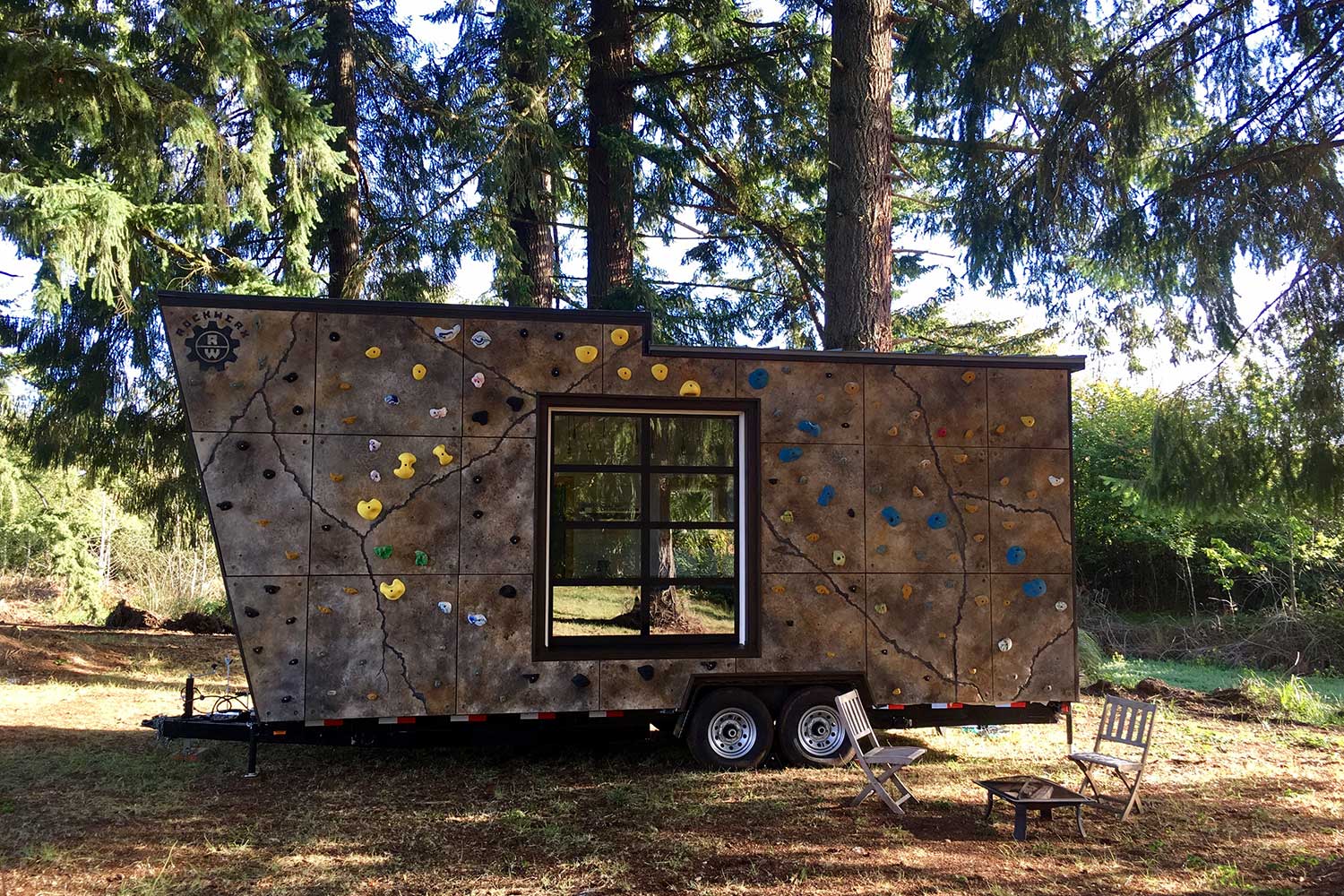
Determining the Average Cost of a Tiny House
As you can see, the average cost of a tiny house can vary quite a bit with all of these factors. Something more simple can start around $40,000, but the price goes up the more you expand, customize, and create!
You now should have a better idea of the costs and financial considerations that go into buying and owning your tiny house. All things considered, tiny living presents an incredible opportunity for many people to own a home at a fraction of the price of a larger, more traditional home. And in addition to financial benefits, there are countless tiny home lifestyle benefits too — from a more flexible way of life, to reduced stress, to a greater connection to the outdoors, and so much more. Tiny home living is about so much more than saving money! Tiny home dwellers are a strong and diverse community of people who want to change the status quo and make life an adventure.
Is a tiny home right for you? Schedule a free consultation with our experienced team of tiny home builders today to find out more and explore your many options. We’re here to help make your tiny dreams come true!
